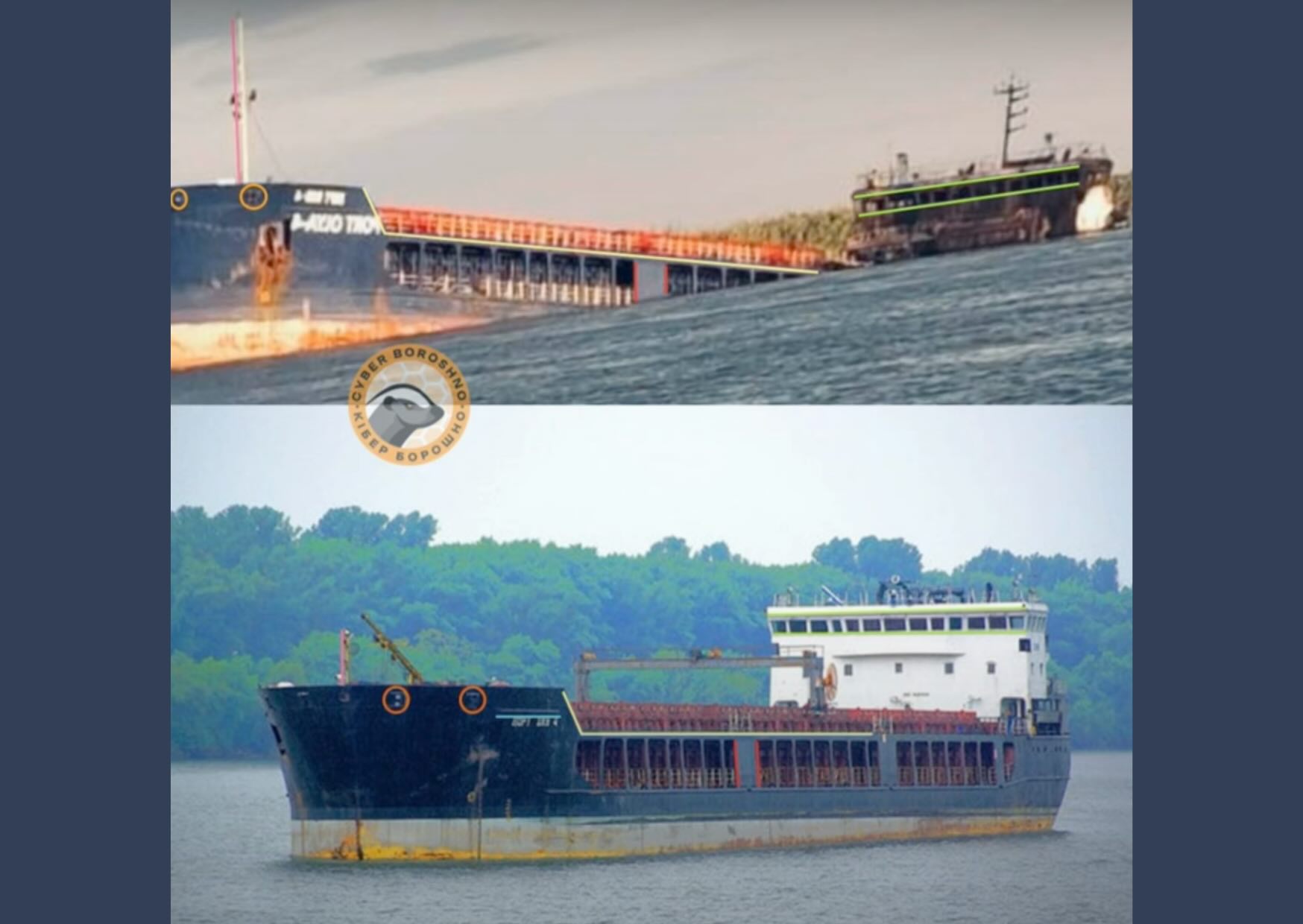


The action forms part of a broader deep-strike campaign against Russian logistics and energy infrastructure.
Photographs circulating after the attack show Port Olya-4 partially submerged and listing close to shore with extensive fire damage to the bridge and superstructure. Independent defence reporting identified the ship as a roughly 400-foot, 4,900-gross-ton Russia-flagged general cargo vessel; unconfirmed reports from a maritime security firm suggested the crew were rescued. Kyiv has not disclosed the weapons used.
The governor of Astrakhan region, Igor Babushkin, acknowledged an incident at Olya port, saying drones were “suppressed or destroyed” and that debris from a downed UAV damaged a vessel. He reported no casualties and no damage to port infrastructure. Russia’s defence ministry did not immediately comment on a strike in Astrakhan region.
Ukraine describes Olya as a key logistics node for shipments of military-related goods from Iran to Russia across the Caspian. The vessel Port Olya-4 regularly transits the Caspian between Iran and Russia, according to Ukrainian military intelligence and prior U.S. Treasury disclosures about Iran–Russia supply routes. Washington last year sanctioned ships and companies it said were involved in moving Iranian weapons to Russia.
If confirmed, the strike would mark a notable extension of Ukraine’s deep-strike reach to maritime logistics on the Caspian, more than 500 miles from the front line. Analysts note that, while Ukraine has repeatedly hit oil refineries and other infrastructure inside Russia this year, direct attacks against individual merchant vessels have been rare. On the same night, Kyiv said it also struck the Syzran oil refinery in Samara region, causing a fire and explosions.
Imagery from Olya indicates the ship sustained critical damage forward, consistent with flooding of forward compartments, and severe fire damage topside. Media monitoring of open-source photographs suggests the vessel grounded and partially sank at her berth or anchorage, rather than in deep water. The extent of structural damage and the presence of scorch marks on the bridge are visible in images published by defence outlets and verified against earlier pictures of the vessel on ship-tracking sites.
Kyiv frames the operation as an effort to disrupt what it calls a persistent Iran–Russia supply chain for one-way attack drones and associated munitions. Western governments and independent researchers have repeatedly documented Russia’s use of Shahed-design drones in strikes on Ukrainian cities, and Ukraine has sought to degrade that capability by targeting production, storage and transport nodes. Ukrainian General Staff data released on Friday stated that most successful deep strikes in 2025 have occurred at ranges between 200 and 1,000 kilometres, with ports and terminals accounting for about 7% of targets.
For Moscow, the Caspian route has been regarded as a comparatively secure corridor for sanctioned goods moving between Iranian and Russian ports. A successful Ukrainian strike at Olya would challenge that assumption and may force Russia to reassess security measures on the Volga–Caspian axis, reroute sensitive cargoes or accept longer transit times and higher costs.
The Olya incident follows a sustained period of Ukrainian cross-border attacks against energy and logistics infrastructure, including oil processing facilities. Kyiv argues such sites and associated transport links are legitimate military objectives because they support Russia’s war effort.